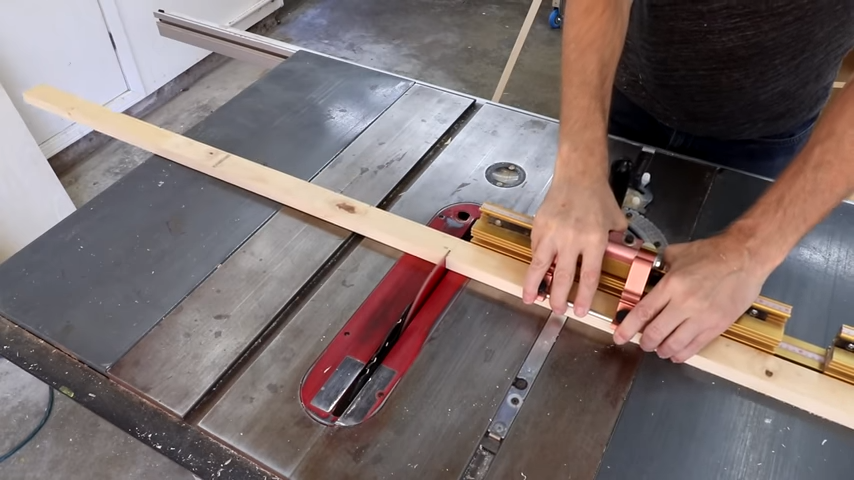
This eBook will teach you 9 key woodworking techniques that are used by professional woodworkers. You'll get detailed instructions and videos for every technique. Plus, you'll discover how to make the Dovetail jig. This eBook will teach you how to create a flawless dovetail everytime. Let's first look at common mistakes beginners make. Keep reading to learn how to avoid these common mistakes.
Dowel trick
The Dowel trick is a great tool for woodworking. This can be used as a center to drill holes in your boards. You can dry-fit two pieces by using the ends a dowel to serve as a centre. To dry-fit the two pieces of lumber, place the dowel inside each board's hole. Make sure the dowel centers match up.

Glue cleanup
While glue can be a great tool for woodworking projects, cleaning it up is quite an art. While rubbing your hands together with glue can help get rid of excess glue, soaking your work in sawdust can lead to wood swelling. It is best to avoid rubbing wet glue on your work because it will show up when you finish it. Use sawdust instead to create a barrier between glue and wood.
Story sticks
Measuring accurately is one of many tricks in the woodworking trade. A storystick will allow you to see all obstacles in the way of base cabinet placement. You can use this information to plan the location of your cabinets. A story stick can be used as a template to make your projects much easier. Here are some other tips for making woodworking easy with story sticks.
Dovetail jig
You can use the dovetail joint jig in woodworking. It allows you to create many different types and styles of joints with one tool. The jig works both indoors and outdoors. It is designed to be sturdy and won't overheat, even when used extensively. Although you can buy it in many styles, it's important to keep in mind that the more versatile the dovetail, the more expensive it will cost.

Toenail trick
The toenail technique is a woodworking tip that can help you save time. When framing a piece, you need to know where to start and where to angle the nail. You can start your nail at 45 degrees and then turn it down. To do this, hold the board with your toe and visualize the nail's path. Use your toe to hold the board in place and drive the nail at the right angle.
FAQ
Can I succeed in woodworking if I'm a genius?
No. No. Woodworking isn't rocket science. It is possible to learn basic tools and techniques that will allow you to create beautiful art.
What are the basics of woodworking?
Building a bench is a great way to get started in furniture building. You can do this project using any type of wood you have on hand at home. You don't need to know which type of wood you should use. Instead, get some pine boards at Lowes or Home Depot. After building your bench, sand off any rough edges and apply a stain or varnish.
How can I determine which tools are most suitable for me?
It's important that you consider your needs and preferences while shopping for tools. Do you prefer metal handles or plastic? What size screws and nails do you use most often? Would you rather use hand tools than power tools?
Are there any tips for starting a woodworking enterprise?
It can be difficult to start a woodworking shop. However, if you are passionate about your hobby you will be willing to put in the effort. You'll likely enjoy the challenge of owning your business.
It is important to remember that unexpected problems may arise when you start a new venture. For instance, you might run out of money unexpectedly. Or maybe you'll find that customers aren't willing to pay as much as you'd hoped. These situations are necessary for survival.
One good tip is to set up a separate bank account specifically for your business. You will always know how much money you have coming in.
Statistics
- Woodworkers on the lower end of that spectrum, the bottom 10% to be exact, make roughly $24,000 a year, while the top 10% makes $108,000. (zippia.com)
- The best-paid 10 percent make $76,000, while the lowest-paid 10 percent make $34,000. (zippia.com)
- The U.S. Bureau of Labor Statistics (BLS) estimates that the number of jobs for woodworkers will decline by 4% between 2019 and 2029. (indeed.com)
- Average lumber prices rose about 600 percent between April 2020 and May 2021. (familyhandyman.com)
External Links
How To
How to make wood joints
This tutorial will teach you how to join two pieces wood together. The "pocket hole joint" is a method whereby we drill holes into the wood and glue them together. This method works great if your wood is straight and smooth. Dowel joinery might be a better option if your wood is not straight or flat. Here are the steps
-
Drill Pocket Hole Joints. You will need to measure and mark the exact location of your pocket hole joint. Then drill 3/4 inch deep holes into the ends of each piece of wood using a jig saw or handheld drilling machine.
-
Sand Smooth. You can sand the edges of the wood to ensure that it doesn't split.
-
Glue both sides together. Apply glue to both sides of the wood. Allow the wood to rest for five minutes before clamping it together.
-
Connect the pieces. After the glue has dried you can attach the pieces to form a flush joint.
-
Trim Joinery. Trim any excess wood surrounding the joint once the glue has dried completely.
Allow enough space between pieces so you can turn them inside out.